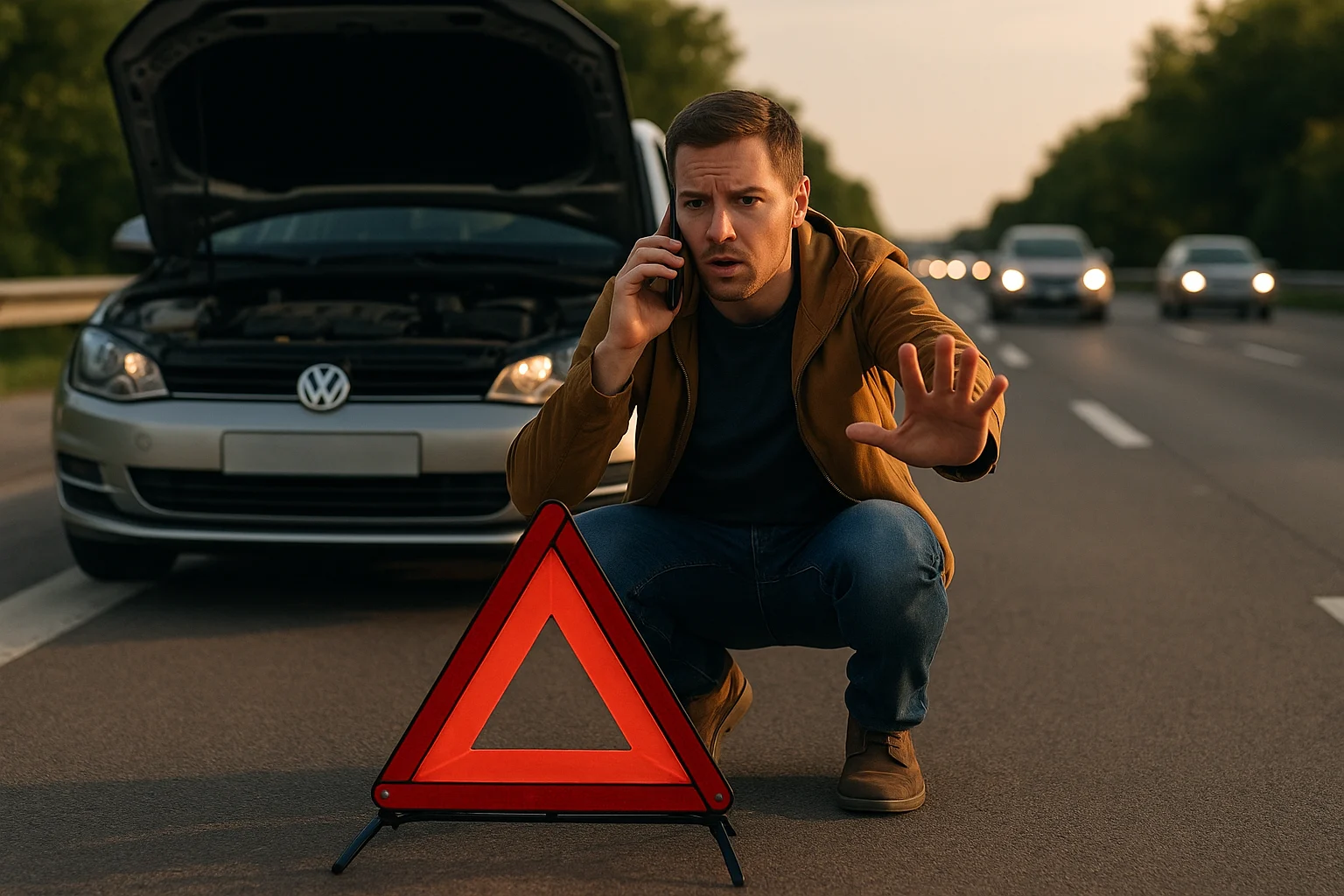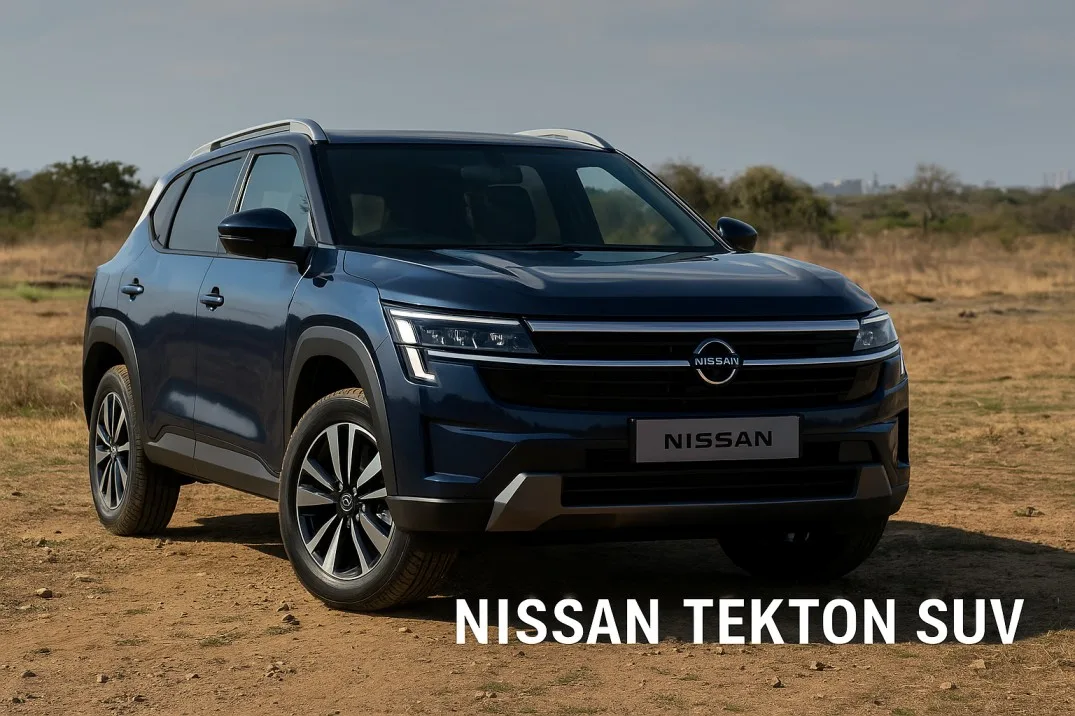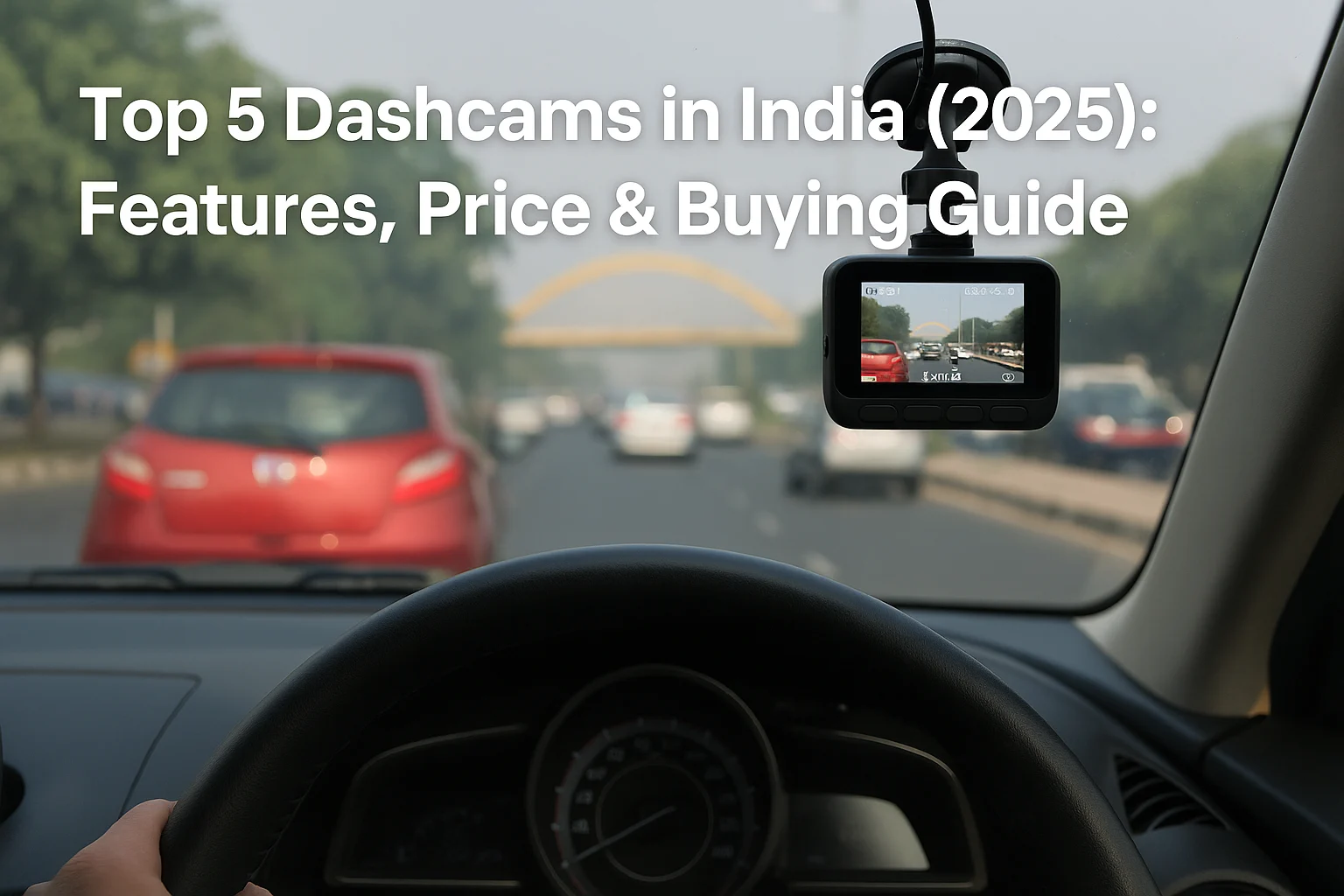Imagine you are driving on the highway; it’s a winter night, you’re blasting music, and everything’s fine until suddenly your car starts making a strange noise before coming to a complete stop. It is one of those moments that no one wants to experience, but unfortunately it happens more than you’d think.
Knowing what to do when your car breaks down because of, let’s say, a flat tire or an overheating engine can keep you safe and calm. So here is a simple guide to walk you through what exactly you should do if you ever encounter such situations.
Why Do Cars Break Down on Highways?
Before you prepare yourself, you need to understand why the breakdowns happen. Some of the most common causes include:
- Flat tires or burst tires because of potholes, debris, or underinflated air pressure.
- Next is engine overheating, which is often caused during long summer drives or if coolant levels are low.
- A battery failure might also result in your car breaking down. It happens when the lights are left on or the battery is old.
- Poor fuel quality or running out of fuel can cause breakdowns.
- Alternator or wiring problems lead to sudden stalling or flickering dashboard lights.
- If your car has transmission or clutch issues, the car might not move at all or make grinding noises.
Be aware and spot early warning signs like strange smells, noises, or dashboard alerts, and make sure to take action before it’s too late.
Step 1: Turn On Hazard Lights & Stay Calm
Don’t panic. That is the first and most important step. Turn on the hazard lights immediately when you notice your car is starting to act up. This action will signal to other drivers that something is wrong, so they will slow down and give you space.
If it’s dark or foggy, turning on your headlights on dim makes your car more visible to others. Now, try to regulate your anxious mind by taking a few deep breaths so you can think clearly and handle things safely.
Also Check: Top 5 Dashcams in India: Features, Price & Buying Guide
Step 2: Move to a Safe Spot Away from Traffic
If your car hasn’t completely shut down yet and still has a bit of power, try to pull over to the left shoulder or emergency lane. Avoid stopping in the middle of the road or on curves because of poor visibility, as it can lead to accidents.
Make sure to use your indicators before pulling over, choose a flat surface and avoid slopes, keep a distance of a few feet away from traffic lanes, and if you are on a flyover, move to the extreme left side of the road.
Once you have made a successful stop, it is now time to step out of the vehicle carefully after switching off the engine.
Step 3: Use a Warning Triangle or Reflectors
Now that you are parked safely, your next step is to make your car visible to others to seek help. If you have a warning triangle or reflective cones in your trunk, use them. Place it about 15-20 meters behind your vehicle. If it’s nighttime, use your phone’s flashlight or torch to make the area more visible.
This will ensure that other drivers can see your vehicle and prevent accidents.
Step 4: Call for Roadside Assistance or Towing
Now, finally, it is time to get professional help with your situation.
- You should start by calling your car manufacturer’s roadside assistance number. This service is provided by most companies, and help is available 24×7.
- Then, use your insurance provider’s towing service and check whether breakdowns are covered in your insurance.
- You can also call highway helplines. India’s National Highway Helpline is 1033, which is open 24×7.
- Then resort to calling private services like myTVS, ReadyAssist, or Crossroads for quick towing or on-spot help.
If your breakdown is caused by flat tires or your car needs a jump-start, then calling a roadside mechanic would be better. But if it’s an engine or transmission issue, then you should definitely call the nearest service center since it’s safer.
Step 5: Inform Family or Emergency Helpline
It is important to let someone know about what is happening, especially when you are travelling alone or at night. Maybe send your live location via WhatsApp to family or a trusted friend and tell them your whereabouts, or share GPS coordinates.
If you are stuck in a remote area or feel unsafe, then call 112—India’s national emergency number. A quick update can save your life in case your phone dies or you lose signal.
Step 6: Don’t Accept Help from Strangers
Not everyone means well, and it is better to be safe than sorry. If a stranger offers help, then be polite and remain cautious. Never let your guard down.
Don’t open your door fully; instead, roll your window down slightly. You can ask them to call your roadside service instead of following them, and don’t hand over your car keys or personal items to the said stranger.
Always trust your gut instinct, and if something feels off, then that’s your cue to stay inside your locked car until official help arrives.
What to Keep in Your Car Emergency Kit?
It is very crucial to have a small emergency car kit. It can save you a lot of stress and panic. Here is what you should always keep in your trunk.
| Items | For |
| First aid kit | any minor cuts or scrapes |
| Warning triangle / reflective vest | To make your car visible to others |
| Torch / flashlight | Helps during nighttime breakdowns |
| Portable phone charger or power bank | Keeps your phone alive for calls |
| Jumper cables | battery-related issues |
| Tire repair kit / inflator | Quick fix for minor punctures |
| Basic tools (screwdriver, wrench, pliers) | Handy for simple fixes |
| Water bottle & snacks | long waits or remote areas |
| Copy of car documents & insurance | In case authorities ask for them |
How to Prevent Future Car Breakdowns?
As we already know, prevention is always better and cheaper than cure. Here is a list of things you should check before driving, which will take less than 10 minutes but can literally save your entire trip.
- Make sure your car is getting regular servicing.
- Before driving off, check tire pressure because underinflated tires are one of the biggest causes of blowouts.
- Monitor engine oil and coolant to prevent overheating or engine shutdown.
- Don’t ignore the weird sounds! Is it your squealing brakes, knocking engines, or grinding noises that can cause a breakdown?
- Also consider replacing your battery if it’s older than 3 years and carry extra fuel on you in case you run out.
- Check for cracks or leaks in your belts and hoses.
Conclusion
A car breakdown is unfortunately very common, and it is indeed quite stressful. As long as you don’t lose your composure and manage to stay calm and follow the right steps, you will be safe.
Always be prepared and have a good presence of mind while driving to prevent this from happening again in the future.
Frequently Asked Questions (FAQs)
Turn on hazard lights immediately and move your car to the left side. Then call for roadside help.
Yes! If you’re parked safely away from traffic and the doors are locked. Avoid standing near the road.
You can still call 1033 (National Highway Helpline) or use private towing services nearby.
If you know how and it’s safe, yes. But if traffic is heavy or visibility is low, it’s better to wait for help.
Check oil, coolant, brakes, tires, and battery, and keep an emergency kit ready.





